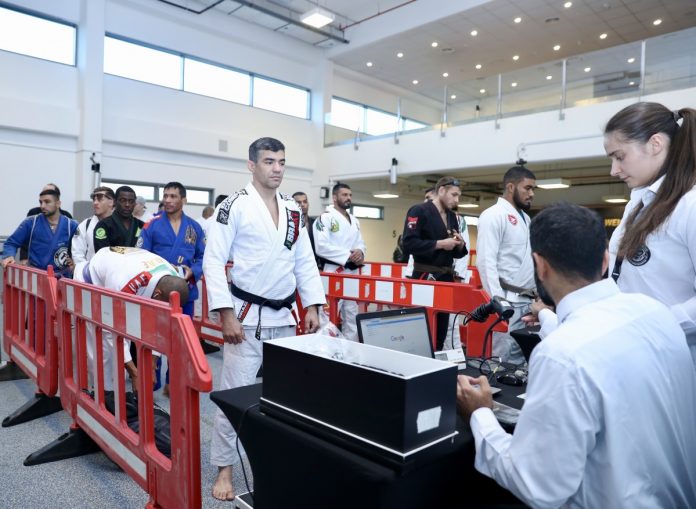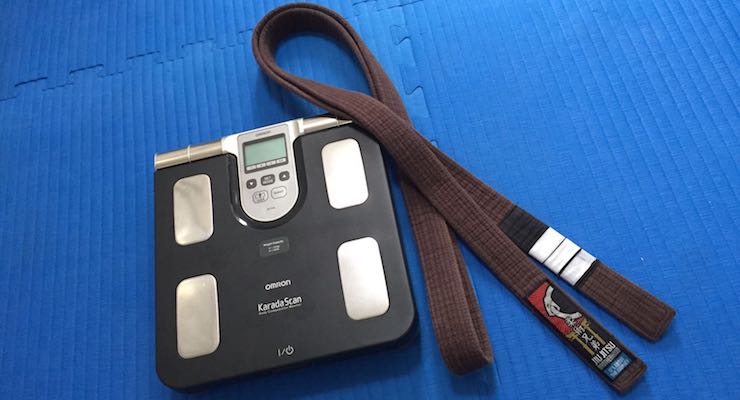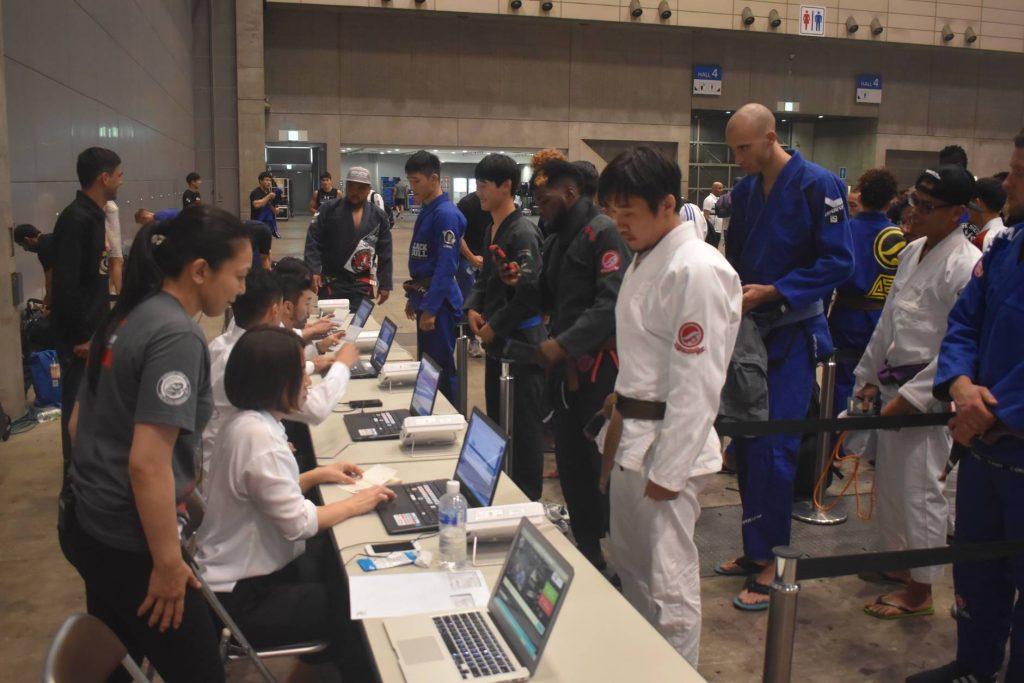
Cutting Weight is very usual in weight class-based sports and BJJ is one of them. As such, competitors are required to weigh within a certain weight limit. The worst reason for getting disqualified even before you enter a tournament is because of being over the weight limit. So, in order for people to be able to compete, they must be on point with their weight. However, most people in competitive sports, especially grappling martial arts, are always looking for even the slightest edge. It might be supreme technical knowledge, an endless gas tank, high-level strategy, or even weight manipulation. With weight manipulation, people tend to look to subtract rather than add. that’s where the weight cut takes place.
Cutting weight for BJJ is a very common practice among grapplers of all kinds of grappling martial arts. It is very common among high school and college wrestlers. Their approach to making weight is to get super heavy over the weekend and then start eating well on Monday. By Wednesday, they’re cutting back on food and water. It goes even further by Thursday when all they have are snacks and sips of water. It stays like that all the way until Saturday and the cycle starts over again. In terms of the weight cut, it is as worse a method as possible.
Weight Cutting In Sports
One common thread that ties most grappling sports together is weight-class-based competition. Consequently, there is the practice of cutting weight for BJJ. However, weight cutting is not a practice that’s solely relegated to grappling and combat sports. It’s also done by jockeys, rowers, and gymnasts. So, if you’re training in a sport where you have to cut weight to compete, makes sure to read on. Even if you’re just dedicated to strength, conditioning, and wellness, it’s still helpful to know how hydration and dehydration can affect your body.
First, let’s look at the science behind an unexpected strategy for cutting weight. Namely, drinking a ton of water and saving your weight cut for the last day is actually better than gradual dehydrating. It doesn’t make sense now, but stick with us and we’ll explain it all. In this case, slow and steady does not win the race.
The Role Of Hormones In Cutting Weight
The key reason behind this big weight-cutting method is an antidiuretic hormone called vasopressin. This hormone plays an essential role in maintaining the water volume in the spaces between your cells.
An important facet of vasopressin’s function is how it reacts to dehydration. Even mild dehydration causes an increase in vasopressin secretion, which stimulates urine concentration. In other words, as soon as you’re even a little bit dehydrated, the body kicks in water conservation mechanisms. On the other hand, a state of super hydration reduces the production of vasopressin. Conversely, your body begins flushing out your excess water through more frequent urination and a higher propensity for sweating. You can see where we’re going with this.
Cutting Weight With Water Strategy
When looking to shed the pounds but keep your strength intact for competition, it is essential to develop a detailed, step-by-step plan. Cutting weight for BJJ is only effective when done correctly.
What you should aim for is to be full and hydrated for about 24 hours out. No need for starvation. A solid nutrition and hydration plan with a hard weight cut the day before will be tough. However, it’s way safer and less torturous than having to go through dehydration for days to little effect. The right approach to cutting weight for BJJ should allow you to stay fresh and energetic during the competition, even (or better said, especially) in the latter stages.
The key is maintaining hydration until about 24 hours before weigh-ins. You have to drink water early and often. Here is a basic water-intake guide, which you can follow leading up to a fight or a match. The method starts from five days out and yields impressive and safe results:
- Day 5: drink 2 gallons of water throughout the day
- Day 4: reduce to 2 gallons
- Day 3: 1 gallon
- Day 2: 2 liters
- Day 1: 1 liter
- Stop all water intake about 16-20 hours before your weigh in, barring occasional small sips
- Pre-Weigh-In: A few small sips
Next, you need to sweat, sweat, sweat! But, don’t use passive water-loss strategies like diuretics or Epsom salt baths. These can be dangerous and deplete water from places like joints, leading to poor performance and higher chances of injury. Instead, dress warm and work out. Generate sweat by practicing the skill sets needed for your sport. This way you’re improving while cutting weight for BJJ. You could also go for short sessions in the sauna (no longer than 10 minutes) or a hot tub.
How To Recover From A Weight-Cut
Even more important than your cutting program is how you recover from it. Dehydration is the number one limiting factor in athletic performance. So, in order to be ready to compete, you need an effective recovery strategy.
Remember that after the weigh-in, it’s not just about water. You have to get carbs and consider macronutrient kinetics. This is the speed at which your body absorbs nutrients. That means no fats, fibers, or meat after weigh-ins. These types of products slow down the absorption in your gut. Instead, have liquid carbs and liquid proteins – specifically, fast-digesting carbs that are low in fiber.
One final, interesting bio-phenomenon to consider in you reefed strategy – warm foods. Warm food causes vasodilation, meaning nutrients will absorb faster. Fancy a warm tea, anyone?
Cutting weight for BJJ is never fun, but it certainly shows passion for your sport if you’re willing to put yourself through the experience. What type of strategies do you use and how will you adjust them next time you’re required to step on the scale?
Avoid This Common Mistakes For An Easy Weight Cut
Every edge is more than welcome in Brazilian Jiu-Jitsu. Some people use freakish flexibility to become unpassable and win matches. Others are just insanely strong, and nothing seems to work. Furthermore, there are those grapplers that are so technical that whatever you do has no impact whatsoever. In the constant quest to edge out their opponents, grapplers turn to every little trick in the book. As long as it is not against the rules it is all fair game. That said, some practices have turned into more of the rule than the exception for grappling martial arts competitors. Since most combat sports, BJJ included, are divided into multiple competition categories like for example weight classes. People that compete in grappling are no strangers to the weight cut practice, regardless of the lack of information and numerous potential health hazards.
A weight cut has just one goal – to strip off bodyweight as fast as possible within the shortest amount of time. This practice is as safe as much as it sounds reasonable. Yet it provides grapplers with the added benefit of the weight advantage. Namely, being the heaviest person in a weight class means you can handle most smaller opponents with ease. Well, that’s the working theory, at least. In reality, most people cut weight so it is not uncommon for almost every competitor in a weight class to be near the upper limit. However confusing, people still see the weight cut as a necessity and try to compete in as low a weight class as possible without fainting from exhaustion. As with most things in BJJ you can do weight cut correctly or not. Let’s look at both.
Competition Weight Cut
Cutting weight is not something that is new to the grappling world. Even before BJJ came along wrestlers were doing weight cuts. The practice goes as far as high school wrestlers and there’s not much information on how to do it correctly. Every so-called expert has the right formula while claiming all others are wrong. it is a vicious circle that puts kids and everyone else’s health, at risk.
The first trouble with weight cutting, in general, is first and foremost in the lack of information on performing a correct weight cut. For once, we can’t actually lose much body weight in a period of a few days. Most weight cut strategies revolve around extreme dehydration. Again it is baffling how people still go for weight cuts when it has several impacts on performance levels.
Furthermore, competition frequency plays an even more important role. For wrestlers in season, weight cutting can be potentially deadly because they compete every weekend. With BJJ competitors this is not such an issue, but it still plays a major role. Rebounding from a difficult weight cut every couple of weeks to compete in a high-stress environment is not smart. Coupled with the wrong approach to shedding the pounds you have a recipe for disaster. Ambition and lack of information are the main causes of mistakes in weight cutting. Without knowing it, athletes make their weight loss harder for themselves.
Common Weight Cutting Mistakes
If you’re still dead set on cutting weight after reading this far, then at least do it right. Apart from a few actual nutritionists, like George Lockhart, there is not much prudent information out there. Lockhart’s stuff is great and now easily available on DVD and in E-book format. If you have your own protocol and are stubborn enough to do it, then cut out any mistakes that might cost you dearly. Here are some of the most common mistakes that can turn a weight cut into a disaster:
-
Commercial Drinks

-
Fruits And Vegetables
Do not confuse weight cut with weight loss. Cutting weight is an aggressive and short-term practice that does not last. Weight loss is s slow process that aims to strip weight off and keep it off. There is a big difference in the method of weight loss over a long period of time and the tactics of weight cutting.
Eating an abundance of fruit and vegetables is a smart way to keep yourself feeling full during long-term weight loss. This is a staple of sports nutrition and is a bit of sound advice. However, it is not the right approach for a weight cut. Fruit and vegetables contain a lot of fiber which stays in the intestines for a long time. This means that grapplers who need to cut weight for competition end up with dead weight. This is the last thing an athlete wants before stepping on the scale.
-
Breakfast Errors
When a competition is far from home grapplers often arrive a day or two early. this means they find themselves exposed to hotel food. In this case, finding the right food to support a weight cut is difficult. Eggs for breakfast is a very common hotel practice and a tempting treat. Actually, eggs are very healthy and contain very high-quality proteins. However, there is no telling how much salt the chef uses. If you can’t ask them to prepare the omelet without salt cool. If not you better skip it and go for something else. The closer your competition day breakfast is to your normal one, the better.
-
Airplane Meals
When traveling for competition, air travel is the preferred choice for most, depending on the distance. This means that you’ll be confronted with the usual airplane cuisine. SHorter destinations mean just snacks, which is not hard to pass. However, a longer journey means full airplane meals. Airplane food always contains a lot of preservatives and additives which will surely interfere with your weight cut efforts.
-
Dehydration Timing

George Lockhart Nutrition & Weight Management System DVD/Book
An Easy Nutrition Plan For Grapplers
Drop Weight Fast With This Jiu-Jitsu Workout Program
The Essential Stack Of Supplements for Jiu-Jitsu
Nutritional Guidelines For Going Up A BJJ Weight Class
How To Train Outside Of Jiu-Jitsu To Get In Fighting Shape


![Darce Choke Encyclopedia – Origins, Mechanics and Variations [2025] BJJ, choke, Brabo, BJJ Darce Choke, D'arce Choke, Darce BJJ Choke](https://bjj-world.com/wp-content/uploads/2017/11/JungPoirierLeeYahoo-218x150.jpg)












![Get Off My Legs Gringo Craig Jones DVD Review [2025] Get Off My Legs Gringo Craig Jones DVD Review](https://bjj-world.com/wp-content/uploads/2025/03/get-off-my-legs-gringo-craig-jones-dvd-review-218x150.png)

![Leg Lock Entries Helena Crevar DVD Review [2025] Leg Lock Entries Helena Crevar DVD Review](https://bjj-world.com/wp-content/uploads/2025/03/leg-lock-entries-helena-crevar-dvd-review-218x150.png)
![Special K Guard Neil Melanson DVD Review [2025] Special K Guard Neil Melanson DVD Review](https://bjj-world.com/wp-content/uploads/2025/03/special-k-guard-neil-melanson-dvd-review-218x150.png)
![Arm Bar It All Shawn Melanson DVD Review [2025] Arm Bar It All Shawn Melanson DVD Review](https://bjj-world.com/wp-content/uploads/2025/03/arm-bar-it-all-shawn-melanson-dvd-review-218x150.png)




![Shin to Shin Eoghan O’Flanagan DVD Review [2025] Shin to Shin Eoghan O'Flanagan DVD Review](https://bjj-world.com/wp-content/uploads/2024/12/shin-to-shin-eoghan-oflanagan-dvd-review-100x70.png)

![Special K Guard Neil Melanson DVD Review [2025] Special K Guard Neil Melanson DVD Review](https://bjj-world.com/wp-content/uploads/2025/03/special-k-guard-neil-melanson-dvd-review-100x70.png)



![Just Pass Jay Rodriguez DVD Review [2024] Just Pass Jay Rodriguez DVD Review](https://bjj-world.com/wp-content/uploads/2024/11/just-pass-jay-rodriguez-dvd-review-100x70.png)

![Closed Guard Reintroduced Adam Wardzinski DVD Review [2025] Closed Guard Reintroduced Adam Wardzinski DVD Review](https://bjj-world.com/wp-content/uploads/2025/01/closed-guard-reintroduced-adam-wardzinski-dvd-review-100x70.png)
![BJJ Foundations Mikey Musumeci DVD Bundle Review [2024] BJJ Foundations Mikey Musumeci DVD Bundle Review](https://bjj-world.com/wp-content/uploads/2024/09/bjj-foundations-mikey-musumeci-dvd-bundle-review-100x70.png)
![Reverse Arm Bar System Andrew Kerfoot DVD Review [2024] Reverse Arm Bar System Andrew Kerfoot DVD Review](https://bjj-world.com/wp-content/uploads/2024/10/reverse-arm-bar-system-andrew-kerfoot-dvd-review-100x70.png)
![Heavy Top Game Fabiano Scherner BJJ DVD Review [2025] Heavy Top Game Fabiano Scherner BJJ DVD Review](https://bjj-world.com/wp-content/uploads/2025/01/heavy-top-game-fabiano-scherner-bjj-dvd-review-100x70.png)
![Spider and Lasso Guard Jared Welman DVD Review [2025] Spider and Lasso Guard Jared Welman DVD Review](https://bjj-world.com/wp-content/uploads/2025/01/spider-and-lasso-guard-jared-welman-dvd-review-100x70.png)
![Woj Lock the World Chris Wojcik Ankle Locks DVD Review [2024] Woj Lock the World Chris Wojcik Ankle Locks DVD Review](https://bjj-world.com/wp-content/uploads/2024/12/woj-lock-the-world-chris-wojcik-dvd-review-100x70.png)


![Kill The Underhook Dima Murovanni DVD Review [2024] Kill The Underhook Dima Murovanni DVD Review](https://bjj-world.com/wp-content/uploads/2024/10/kill-the-underhook-dima-murovanni-dvd-review-100x70.png)
![Underhooks With Uncle Jeff Glover DVD Review [2025] Underhooks With Uncle Jeff Glover DVD Review](https://bjj-world.com/wp-content/uploads/2025/02/underhooks-with-uncle-jeff-glover-dvd-review-100x70.png)



